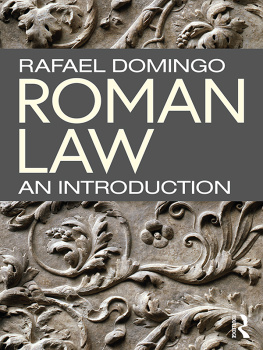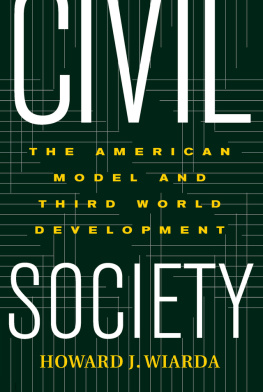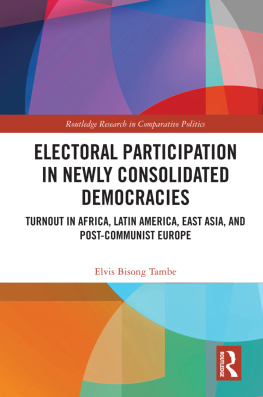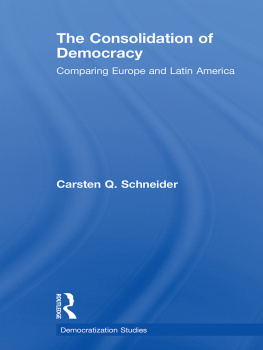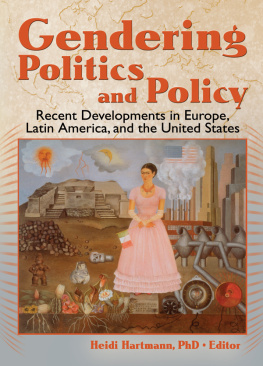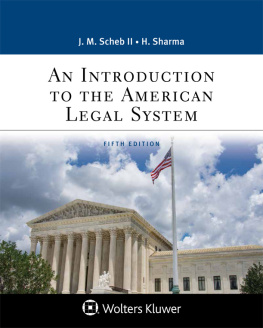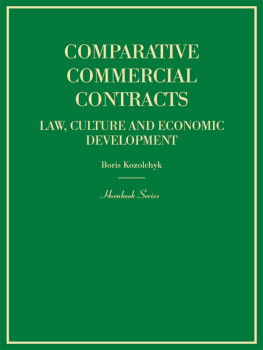JOHN HENRY MERRYMAN AND ROGELIO PREZ-PERDOMO
The Civil Law Tradition
AN INTRODUCTION TO THE LEGAL SYSTEMS OF EUROPE AND LATIN AMERICA
Fourth Edition
STANFORD UNIVERSITY PRESS
STANFORD, CALIFORNIA
Stanford University Press
Stanford, California
1969, 1985, 2007, 2019 by the Board of Trustees of the Leland Stanford Junior University. All rights reserved.
No part of this book may be reproduced or transmitted in any form or by any means, electronic or mechanical, including photocopying and recording, or in any information storage or retrieval system without the prior written permission of Stanford University Press.
Printed in the United States of America on acid-free, archival-quality paper
Library of Congress Cataloging-in-Publication Data
Names: Merryman, John Henry, author. | Prez-Perdomo, Rogelio, author.
Title: The civil law tradition : an introduction to the legal systems of Europe and Latin America / John Henry Merryman and Rogelio Prez-Perdomo.
Description: Fourth edition. | Stanford, California : Stanford University Press, [2018] | Includes bibliographical references and index.
Identifiers: LCCN 2018012684 (print) | LCCN 2018013709 (e-book) | ISBN 9781503607552 (e-book) | ISBN 9781503606814 (cloth : alk. paper) | ISBN 9781503607545 (pbk. : alk. paper) | ISBN 9781503607552 (e-book) Subjects: LCSH: Civil law systems.
Classification: LCC K585 (e-book) | LCC K585 .M467 2018 (print) | DDC 340.5/6dc23
LC record available at https://lccn.loc.gov/2018012684
Typeset by Newgen in 10/12 Galliard
For Nancy, Len, Sam, and Bruce, in celebration of April 1, 1953, and other great days.
J.H.M.
For Camila.
R.P.P.
CONTENTS
PREFACE TO THE FOURTH EDITION
PROFESSOR JOHN HENRY MERRYMAN passed away on August 3, 2015, after a long, active, and productive life. He made enormous contributions to legal scholarship: he created a new field, art in the law, and he conceived a new approach to comparative law. He was interested in comparing legal systems in action and using the social sciences and quantitative indicators in his analysis. He studied the Italian law in depth and was familiar with French and German law as well the main Latin American legal systems.
This book is one of his early works in comparative law. It is a masterpiece: clear, comprehensive, and at the same time of an unusual depth. The previous three editions in English are a good proof of its acceptance in the English-speaking (common law) world. The translation into many languages of the countries of the civil law tradition shows its worldwide acceptance. Professor Merryman asked me to participate in its updating for the third edition in 2006, and I was honored when he recognized me as his coauthor. In 2013 and 2014 we taught together Comparative Law and Society at Stanford Law School, and this was the occasion for new conversations on the continuing evolution of the civil law tradition. Generally, we agreed in our understanding of these changes. I think this fourth edition reflects these conversations and our areas of agreement.
In the first two editions, it was clear that an American jurist was explaining the civil law tradition in comparison with his native tradition. I am a native of the civil law tradition, but in this edition the American law is maintained as an anchor for the comparative law purposes. The general appreciation and success of the previous editions of this book encouraged a conservative approach that avoided unnecessary changes.
R.P.P.
Stanford, 2018
PREFACE TO THE ORIGINAL EDITION
THIS BOOK is written for amateurs, not professionals. It speaks to the general reader who wants to know what it is that binds together the legal systems of Western Europe and Latin America and that distinguishes them from the legal systems of the Anglo-American world; to the nonlawyer who wishes to know something about the legal side of European and Latin American culture; to the student seeking collateral reading for a course in history, politics, sociology, philosophy, international relations, area studies, or law. This book may also have some use among lawyers who have not studied foreign and comparative law and wish, for practical or other reasons, to begin to remedy this deficiency. It can provide background reading for persons with public or private business in Europe or Latin America (or other civil law nations). My professional colleagues in foreign and comparative law, however, are likely to find the work too elementary and too general to engage their interest.
Although I have tried to make it clear in the text that this book does not attempt to describe any specific national legal system, a special word should be said here about the peculiar problem posed by France and Germany. Each of these nations has made a major contribution to the civil law tradition, and each still occupies a position of intellectual leadership in the civil law world. At the same time, neither is a typical civil law system. Indeed, they are in a sense the least typical of all. The French revolutionary ideology and the French style of codification had only a limited impact on German law. German legal science has never really caught on in France. Elsewhere in the civil law world, however, there has been a strong tendency to receive and fuse both influences. This is particularly true in Mediterranean Europe and Latin America, but it also applies to some extent to most other parts of the civil law world. French or German readers may find much in this book that is not representative of their legal system. The reason is that their system is atypical. The civil law world includes a great number of national legal systems in Europe, Latin America, Asia, Africa, and the Middle East. This book is about the legal tradition they share, not about French or German law.
Something should also be said about perspective. I do not mean to suggest that all lawyers in civil law nations accept and believe in those aspects of their tradition that will appear to the reader to be excessive or deficient. On the contrary, I have tried to indicate throughout (and to hammer the point home again in , which I beg the reader not to skip) that I am describing prevailing attitudes. There is the common run of lawyers, and there is the sophisticated, critical jurist at the growing point of legal thought. Sophisticated jurists always constitute the smaller and less representative group, but even in the most backward nation one can expect to find a few lawyers who will honestly say: I dont think that way at all. In a more advanced civil law nation like France or Germany, the proportion of enlightened and liberated lawyers and the extent to which the legal order has freed itself of the defects of the tradition will be greater. That is another indication of the atypicality of France and Germany. This book, however, is about the way the common run of lawyers in the civil law world generally think, even though the avant-garde of legal thought tells them they are wrong.
Dean Bayless A. Manning of the Stanford School of Law persuaded me that there was a need for this book, and encouraged me to write it. Three outstanding comparative lawyersProfessors Mauro Cappelletti of the University of Florence, F. H. Lawson, formerly of Oxford University, and Konrad Zweigert, of the Max Planck Institute in Hamburgkindly read the manuscript and suggested a number of changes that improved it. One of my colleagues at Stanford, Dr. George Torzsay-Biber, was particularly helpful on a number of questions concerning Roman civil law. Generations of imaginative and industrious scholars have produced a rich literature on foreign and comparative law, from which most of the ideas contained in this book were drawn. Dr. Hein Ktz, Research Associate at the Max Planck Institute in Hamburg, and Gernot Reiners, a Teaching Fellow at the Stanford School of Law, 196768, assisted me in a variety of ways, and in particular gave me authoritative information on German law. Mrs. Lois St. John Rigg prepared the manuscript for publication with skill, patience, and good humor. To all, my thanks.


